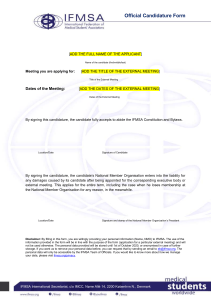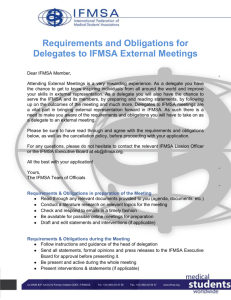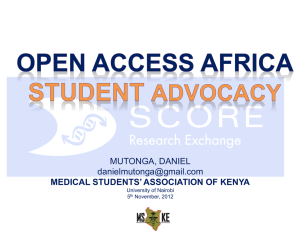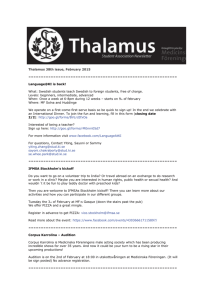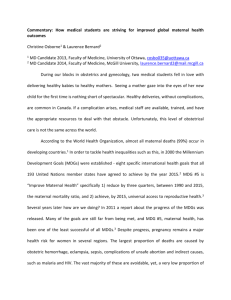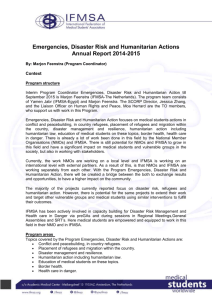marrow anticipate
advertisement
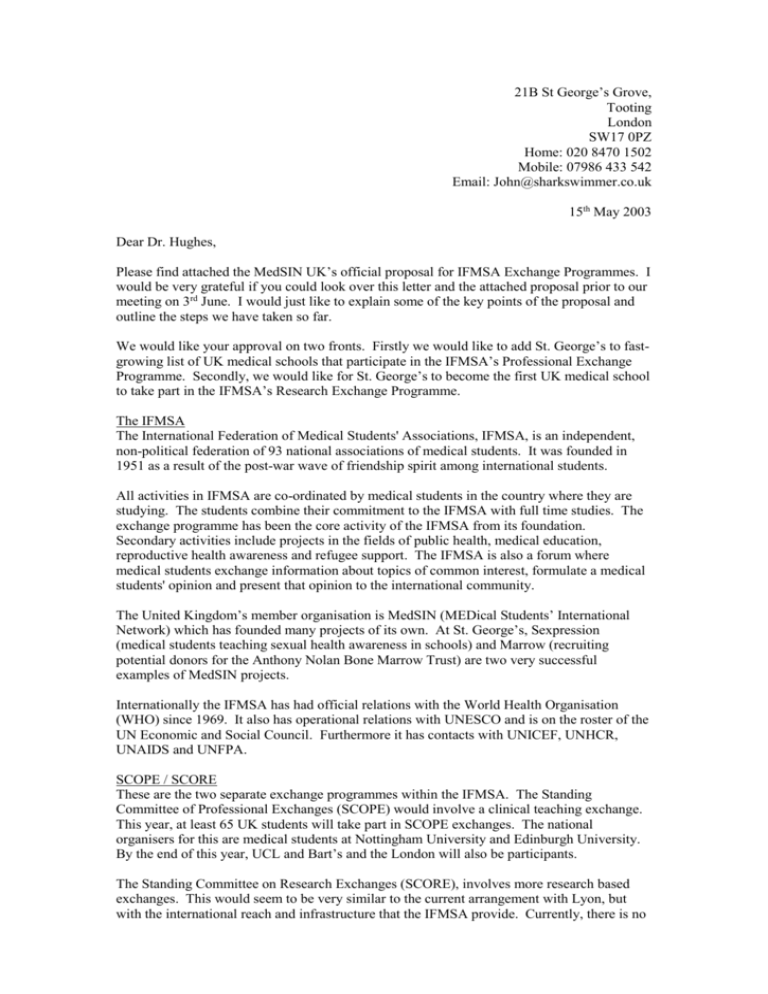
21B St George’s Grove, Tooting London SW17 0PZ Home: 020 8470 1502 Mobile: 07986 433 542 Email: John@sharkswimmer.co.uk 15th May 2003 Dear Dr. Hughes, Please find attached the MedSIN UK’s official proposal for IFMSA Exchange Programmes. I would be very grateful if you could look over this letter and the attached proposal prior to our meeting on 3rd June. I would just like to explain some of the key points of the proposal and outline the steps we have taken so far. We would like your approval on two fronts. Firstly we would like to add St. George’s to fastgrowing list of UK medical schools that participate in the IFMSA’s Professional Exchange Programme. Secondly, we would like for St. George’s to become the first UK medical school to take part in the IFMSA’s Research Exchange Programme. The IFMSA The International Federation of Medical Students' Associations, IFMSA, is an independent, non-political federation of 93 national associations of medical students. It was founded in 1951 as a result of the post-war wave of friendship spirit among international students. All activities in IFMSA are co-ordinated by medical students in the country where they are studying. The students combine their commitment to the IFMSA with full time studies. The exchange programme has been the core activity of the IFMSA from its foundation. Secondary activities include projects in the fields of public health, medical education, reproductive health awareness and refugee support. The IFMSA is also a forum where medical students exchange information about topics of common interest, formulate a medical students' opinion and present that opinion to the international community. The United Kingdom’s member organisation is MedSIN (MEDical Students’ International Network) which has founded many projects of its own. At St. George’s, Sexpression (medical students teaching sexual health awareness in schools) and Marrow (recruiting potential donors for the Anthony Nolan Bone Marrow Trust) are two very successful examples of MedSIN projects. Internationally the IFMSA has had official relations with the World Health Organisation (WHO) since 1969. It also has operational relations with UNESCO and is on the roster of the UN Economic and Social Council. Furthermore it has contacts with UNICEF, UNHCR, UNAIDS and UNFPA. SCOPE / SCORE These are the two separate exchange programmes within the IFMSA. The Standing Committee of Professional Exchanges (SCOPE) would involve a clinical teaching exchange. This year, at least 65 UK students will take part in SCOPE exchanges. The national organisers for this are medical students at Nottingham University and Edinburgh University. By the end of this year, UCL and Bart’s and the London will also be participants. The Standing Committee on Research Exchanges (SCORE), involves more research based exchanges. This would seem to be very similar to the current arrangement with Lyon, but with the international reach and infrastructure that the IFMSA provide. Currently, there is no SCORE programme in the UK, leaving the potential for St. George’s to become the ‘national pioneers’ of this project. I think if we could fill this role, we would have the benefits of attracting more international students to St George’s as well as expanding the choice of SSMs for our own students. The MedSIN committee has been working towards introducing these programmes to St. George’s since January. Over the last five months we have thoroughly investigated what is involved in participating in these programmes, attended training meetings in London and Germany and met twice with the SSM committee. The committee seemed both interested and excited by the idea, and agree that St. George’s students can use SSM IV to take part in the Professional Exchange Programme. They also are willing to work with the MedSIN committee to introduce Research Exchanges to the UK. One of the most attractive features of the programmes is that they are student led; leaving the MedSIN committee of St. George’s responsible for arranging accommodation, food, administration and transport for the student. The faculty’s role is simply to ensure the incoming student receives five weeks of clinical or research teaching in place of our outgoing student. We anticipate that both the four and five year medical students will be able to take part in the Professional Exchange, and hope that the same would be true with the Research Exchanges with the addition of the Biomedical Science student. This would mean that every St. George’s graduate would have been presented with the opportunity to study abroad at some point in their degree programme. In addition, the SSM choices of five year Medical Students would be increased even further, without placing further administration pressures on either the student or the faculty. We hope you will agree that this is an exciting and innovative proposal that can only add to the international profile of St. George’s, whilst showing international students the quality of our teaching and healthcare system. Our own students would benefit by the broadening of their clinical or research experience in a foreign healthcare system. Yours sincerely, John Forrest MedSIN, St. George’s.
